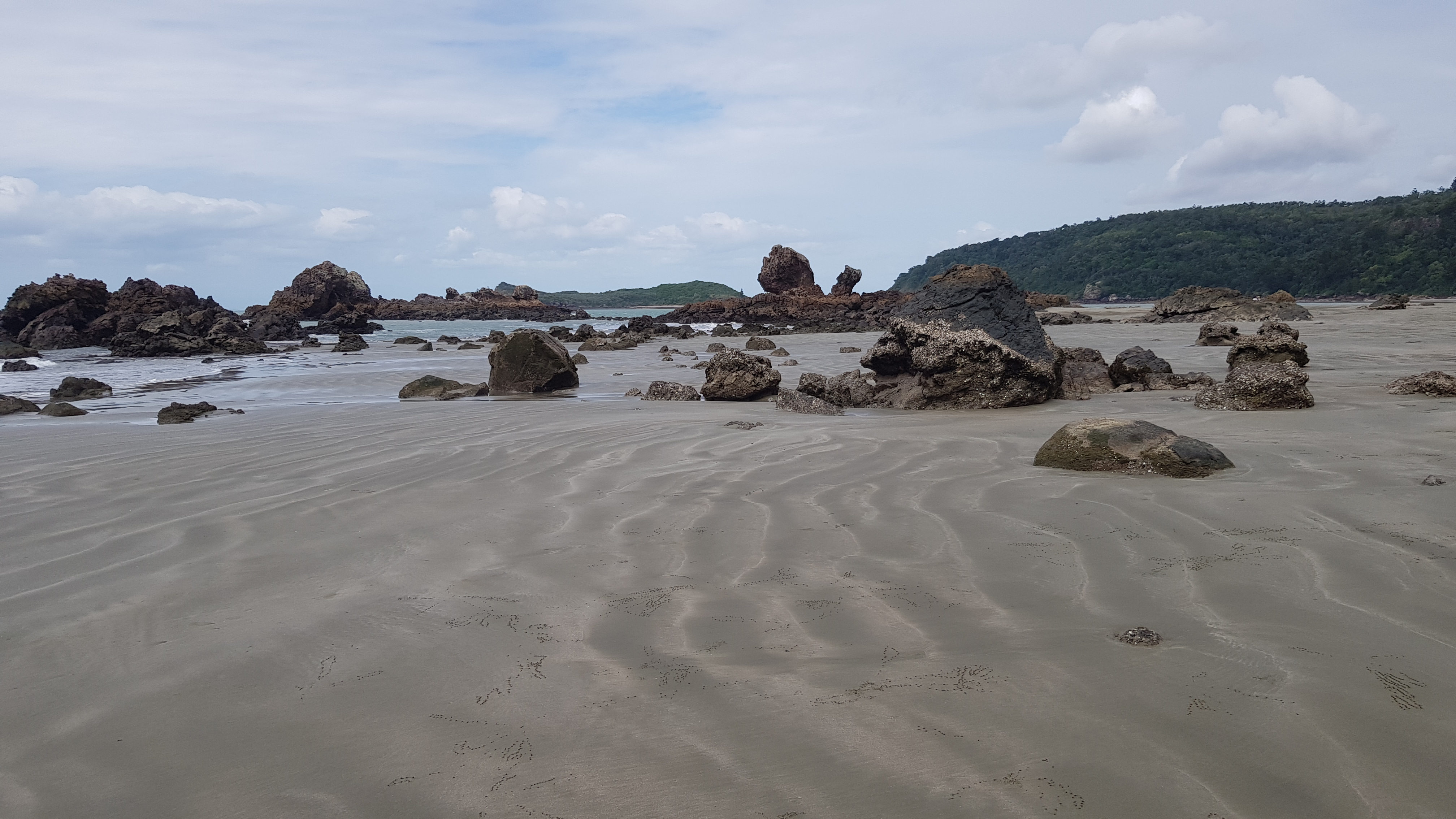|
|
Substrate compositionSubstrate composition is what constitutes the benthic substrate of a system, i.e., its make-up. Unconsolidated substrates are composed of fragments originating from the weathering and erosion of older rocks. Organisms and ecosystems can also contribute to substrate composition as part of their life cycle. Humans can make substantial changes to the composition of substrates. Quick facts
Substrates are either composed of unconsolidated deposits, or consolidated, lithified or hardened bedrock (refer to the Consolidation attribute). During the rock cycle, consolidated substrates break down into unconsolidated substrates through chemical, physical and biological weathering and erosion processes. Over time, deposits of unconsolidated sediments are laid down in successive layers, eventually hardening into rock (lithification) such as sedimentary rocks. The composition of unconsolidated sediments can influence what kind of sedimentary rocks they ultimately become – see Lithology. The Land Zone framework that underpins Regional Ecosystem mapping explains terrestrial lithology, geomorphological and soil forming processes on land. Deeply weathered substrates and duricrusts are formed by chemical soil forming and deep weathering processes (terrestrial processes). This can include deep sands and rounded (indurated) nodules of iron and aluminium (gravels), described in land zones 5 and 7. Biogenic substrates (e.g. limestones) are grouped with other sedimentary rocks in land zone 9[3]. Substrate composition can also be affected by landscapes changing over time (for example, ice ages and changing sea levels). Alluvial landscapes include floodplains and wetland soils (hydrosols) (see wetland soils). Other land zones are described in Geology/lithology. Terrigenous sediments are derived from terrestrial rock through weathering into sediments, mainly composed of silica including minerals such as feldspars, quartz, mica and clays. Carbon-dominated substrates are part of the carbon cycle where vegetated habitats incorporate and store carbon which can include the build up of organic material such as peat. Calcareous substrates can be either biogenic (produced by organisms – e.g. shell gravel, coral sand etc.) or non-biogenic (produced by chemical reactions). Anthropogenic changes in substrate composition include changes in catchment landuse that release terrigenous suspended fine particles in the water column above natural concentrations. Terrigenous suspended sediments can decrease water clarity resulting in insufficient light for photosynthesis, creating broad ranging disturbances, influencing particular taxonomic groups, life-history characteristics (i.e. light-dependent, photosynthetic biota) and habitat types[1]. Anthropogenic changes to substrate composition include the addition of metals, concrete, timber and other materials. Substrates may accumulate dissolved chemicals including particulate metals, organometallics and organics. Certain benthic biota are indicators of sediment toxicity. Carbonate (calcareous) sands behave very differently from the silica-based (siliceous) sands during sediment transport – there are implications for shoreline erosion if they dissolve due to ocean acidification. LinksSubstrate composition (Intertidal and Subtidal) References
Last updated: 18 October 2023 This page should be cited as: Department of Environment, Science and Innovation, Queensland (2023) Substrate composition, WetlandInfo website, accessed 8 May 2025. Available at: https://wetlandinfo.des.qld.gov.au/wetlands/ecology/components/substrate/substrate-composition/ |

 — Department of the Environment, Tourism, Science and Innovation
— Department of the Environment, Tourism, Science and Innovation


